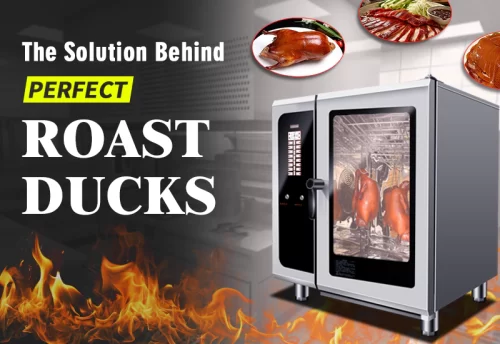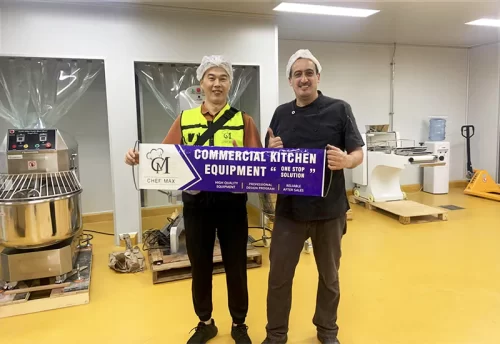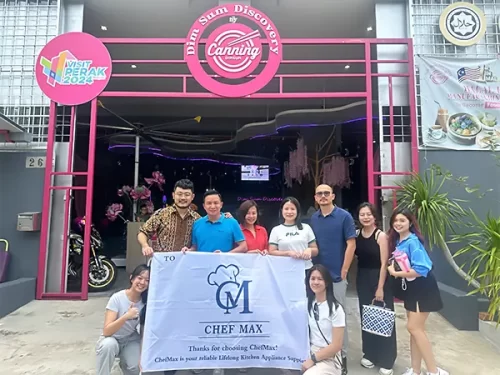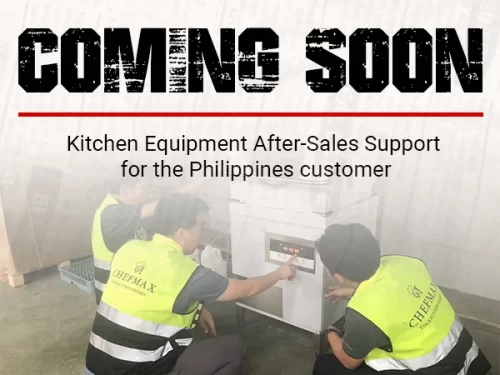Best Commercial Pasta Cooker Buying Guide
Are you planning to purchase a commercial pasta cooker for your restaurant business to increase your profits? Delicious pasta and noodles are popular worldwide, and a pasta cooker can improve the quality of pasta dishes, plus they can cook vegetables, seafood, dumplings and more. Follow Chefmax to learn how to choose the right pasta cooker to create delicious food in a compact space.
1. What types of commercial pasta cookers are there?
Pasta cookers are equipment made specifically for cooking pasta, they bring water to a boil quickly and come in the same sizes and energy types as other commercial kitchen equipment.
A. Desktop and Vertical
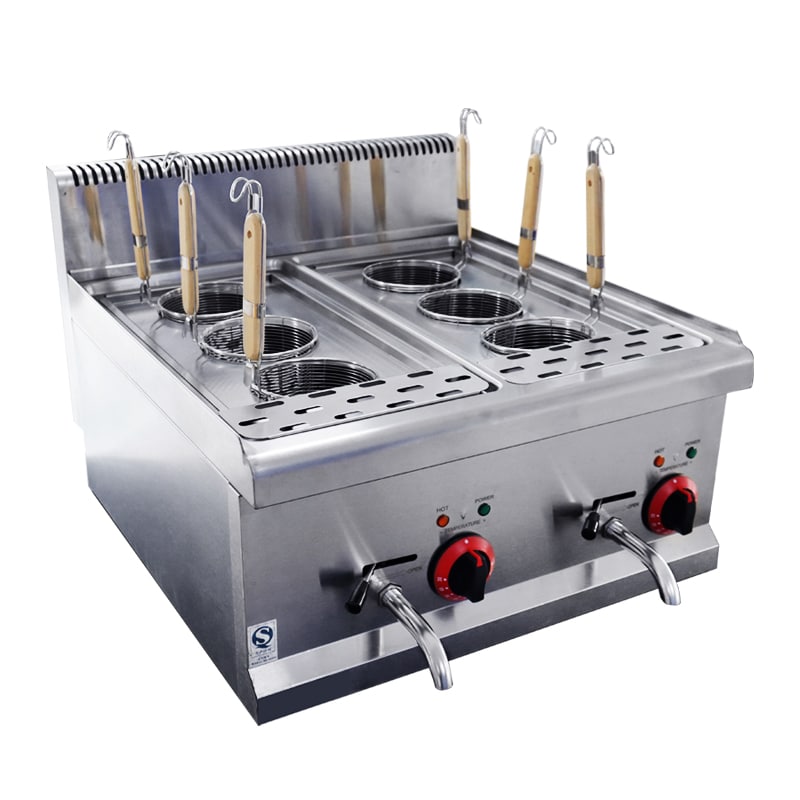
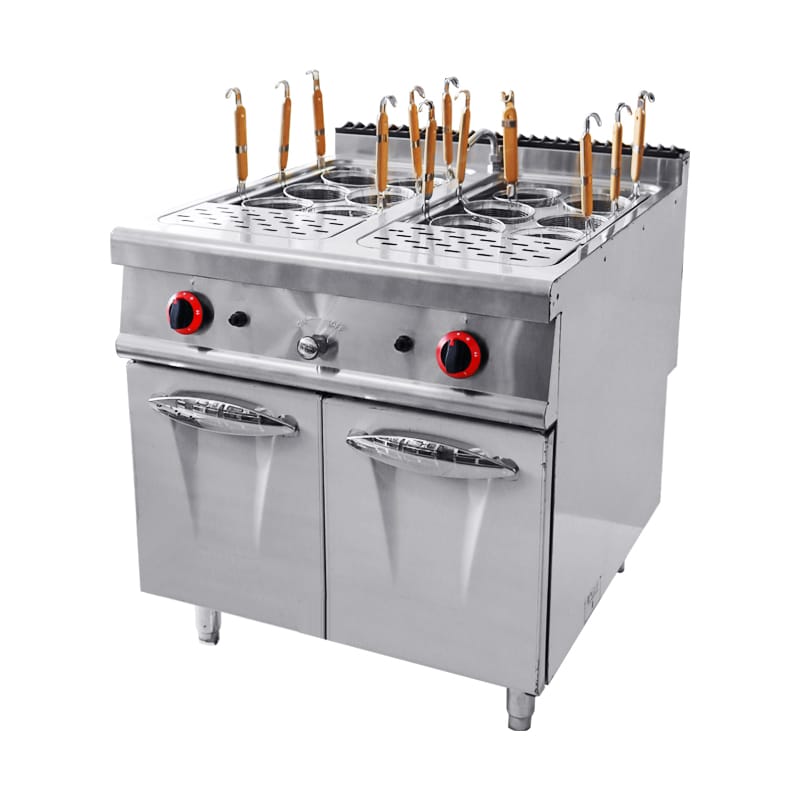
Advantages:
• Can be placed on countertops to save kitchen space
• Ideal for kitchens where less food needs to be cooked and space is tight, such as food trucks, food stands and cafeterias
• Easy to carry and move
Disadvantages:
• Because of their size, countertop commercial pasta cooker are basically electric models, and they do not have extra space for burners
• Can only cook a small amount of food at a time
Advantages:
• More food can be cooked at once, suitable for most restaurants and stalls that serve more food, larger models are also suitable for hotels and various canteens
• The cabinet can be opened, easy to clean and repair
Disadvantages:
• Takes up more space
B. Gas type, electricity type and electromagnetic type
In addition to making decisions based on energy prices, they have the following characteristics.
Gas type
• Natural gas or propane as energy source, usually gas is cheaper than electricity
• Mostly vertical
• Fast heating speed and easy to control
Disadvantages:
• Requires docking of gas piping, more fixed installation location
• Combustion generates heat and exhaust gases, requiring higher ventilation in commercial kitchens
Electricity type
• Desktop vertical can be selected
• Easy and fast installation, less demanding, power wiring is easier to find and set than gas piping
• No risk of gas leakage, no open flames, safer
• No open flame combustion exhaust gas, low ventilation requirements
Disadvantages:
• Requires longer warm-up time
• More difficult to use outdoors
Induction type
• Heats up faster than gas and electric types
• Heat is not dissipated in the air, resulting in higher thermal efficiency and better energy savings
• No direct heat source of open flame, safer
• Higher sensitivity for temperature control than other types, can provide smaller heat steadily
Disadvantages:
• Higher initial acquisition and maintenance costs
• Requirements for pots and pans (only ferromagnetic pots can be used)
2. How do I choose the right commercial pasta cooker for my business?
Choosing the right commercial pasta cooker is not complicated, and Chefmax shares four areas to focus on that you can take step-by-step, depending on the situation.
A. Own situation
Quantity of food to be served
This step is to determine the capacity of the commercial pasta cooker. Please determine your daily business volume, preferably before choosing a unit with a capacity that exceeds the peak supply by 10-20% to ensure perfect response to these orders.
Typically, a standard single cup pasta cooker basket can produce 0.5-1.5kg of food in a single cooking cycle. If you are cooking smaller quantities, a tabletop pasta cooker with 2-4 cooker baskets can meet the demand, while above this value, you need to consider a higher capacity vertical cooker that can contain 6 standard cooker baskets or even more.
Types of food
Consider this aspect to confirm the number of tanks and baskets. If your menu offers only a single type of cooked food, such as pasta and a few vegetables, then a single tank and 1-2 baskets will be sufficient to cook them, as they will ripen at the same time and temperature, and will not taste like each other.
In the second case, when you need to cook pasta, ramen, seafood, vegetables or other noodles at the same time, we recommend you to consider a multiple tank and multiple basket cooker, where different tanks can be adjusted for different temperatures and times, and where the food will affect each other’s taste. Multiple baskets ensure that different types of food do not mix and tangle with each other.
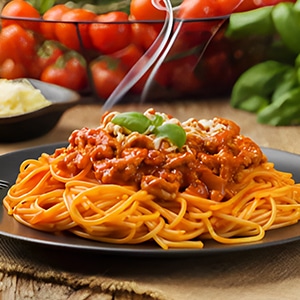
B. Requirements for the foundation of the equipment
Plate material
Commercial noodle cooking ovens usually use stainless steel as the plate, the types are 201, 304, 316, and additionally 430 stainless steel. Among these materials, 304 has higher corrosion resistance and price than 201 and 430. 316 is the best, its strong corrosion resistance is not only adapted to keep smooth in coastal open air conditions, but also adapted to the chemical industry and exposure to salt water work (pasta is usually cooked in brine for initial seasoning), so 316 is called “marine grade stainless steel “and, correspondingly, it is the most expensive.
So taking into account the cost effectiveness and experience, most commercial pasta cooker use 304 or 201 as the material, the water tank will use the best material (using a one-piece stamping process of the water tank can effectively avoid leaks and welded joints rust problems), there will also be the type of aluminum plate as the bottom or back plate.
Basket types
The pasta cooking baskets are available in a variety of different materials and sizes and can be customized according to needs. The common material used is stainless steel, while square and round baskets are the most widely applicable.
Single cup rack: This type of pasta cooking basket puts multiple smaller baskets in a larger basket, making it suitable for cooking food for multiple customers at once or for different parts of a serving, making it easy to reorganize later. Usually nine individual baskets are included.
Square baskets: There are square baskets that can be placed in their entirety or two separate rectangular baskets, both of which are suitable for cooking large quantities of the same food at one time, while the separate baskets offer two different food options.
Round baskets: These baskets are suitable for cooking single portions of food and come in flat-bottom and pointed-bottom types. The flat-bottom is more suitable for a wide range of pasta and vegetables, while the pointed-bottom is more suitable for pasta and is more conducive to water droplets converging and falling during the water filtration process.
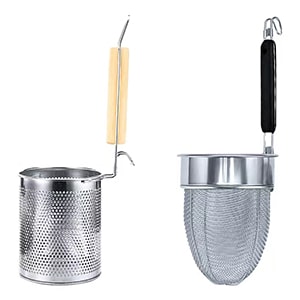
C. Requirements for equipment functions
Convenience features
The commercial pasta cooker has many designs that can improve the sense of use. There are standard features such as overflow area and faucet, and additional designs such as automatic lifting and editing menu. Here is a brief introduction of them, you can choose whether to purchase a stove with these features according to the actual situation.
Forced boiling design
This means that when the food enters the pot, before the temperature reaches boiling, a jet at the bottom is designed to create a stream of water to disperse the food and prevent it from sticking to each other, eliminating the need for the operator to stir. This allows the operator to save time for other tasks and also improves the quality of the food cooking, avoiding undercooking due to sticking.
Faucet
Water inlets that are connected to the water source at the front or rear of the unit, either placed at the rear of the unit in the style of a faucet or hidden on a plate in front of the tank, whatever the form, they allow for quick water intake when in use or for rinsing the starch from the noodles at the end of cooking.
In addition to the water inlet faucet, there are also drain faucets underneath the unit (manifested as drain valves on vertical commercial pasta cooker), which quickly empty the tank for easy water changes or cleaning.
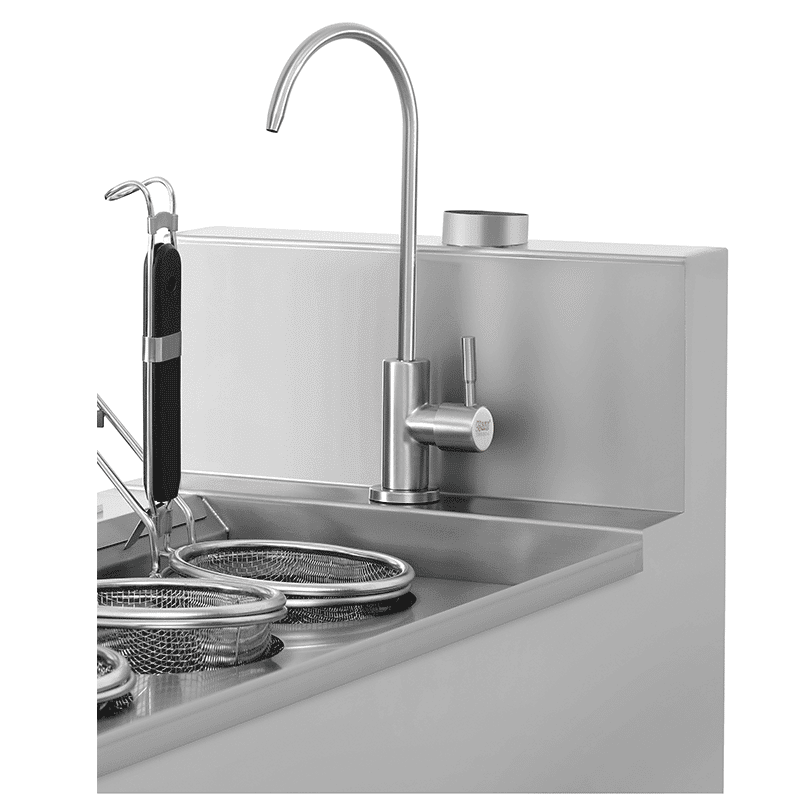
Front drainage area
Equipment without basket hanging plates usually has a drainage area in the front to provide a resting place for the cooked pasta basket after the food has matured. You can place the baskets on these plates with holes to drain the water and the water will not accumulate in the front, keeping the equipment neat and beautiful.
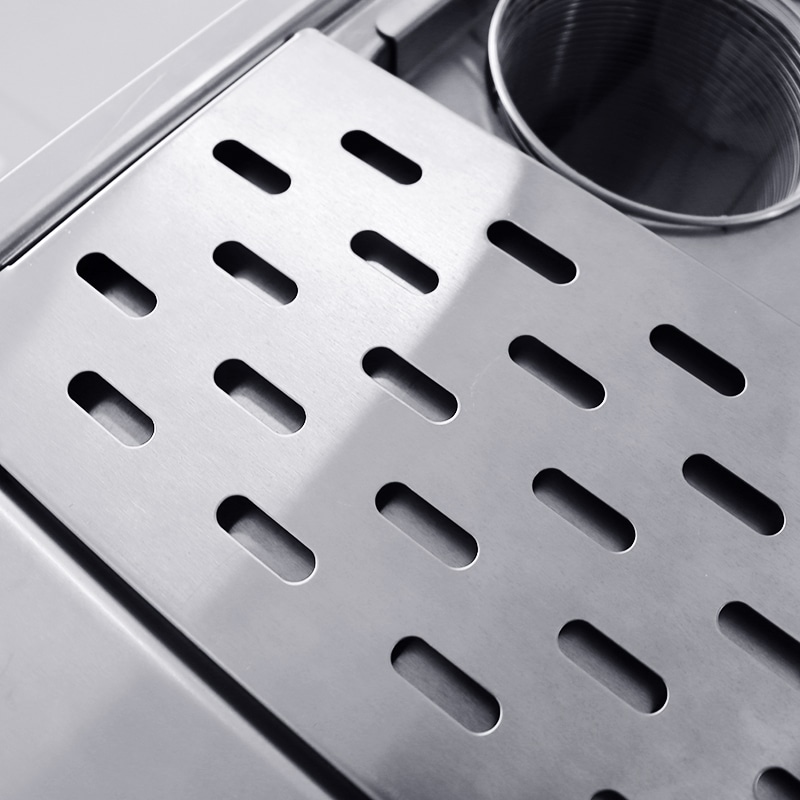
Timing, editing menu, automatic lifting
After being able to adjust the temperature precisely, the timing and menu functions simplify the cooking process. For example, if your pasta needs to be cooked on high for three minutes and then low for four minutes, the unit will adjust the temperature itself based on a set menu, run on time and stop heating when cooking is complete, and with the auto-lift function, the basket will automatically lift up to cool down and drain at the end of cooking. Ideal for busy kitchens to improve efficiency and reduce the cooking process.
Adjustable support feet
The support feet located on the bottom of the vertical pasta cooker allow the unit to be adjusted to the right height and they can also be replaced with wheels that allow the operator to easily move and clean the bottom and back walls.
Energy-saving design
The pasta cooker with energy-saving design does not stop heating completely after cooking, but keeps the water temperature constant until the next order arrives, avoiding the need to spend a lot of time boiling cold water again when an order is received, saving energy and improving cooking efficiency at the same time.
Safety Features
Anti-dry boil design
The design uses a water level probe or temperature control probe to work, and automatically stops heating when the water level probe detects extremely low water level or the temperature control probe detects that the heat pipe exceeds 130°C, reducing the probability of accidents.
Flame-out protection design
Specially designed for gas type pasta cooker safety protection function, automatically cut off the gas supply when the long open flame goes out or the burner goes out abnormally, effectively avoiding the risk of gas leakage.
3. Summary
A proper pasta cooker can effectively help your business, so if you need more expert advice on commercial pasta cooker, contact Chefmax and we’ll provide you with all the information you need as soon as possible.

























